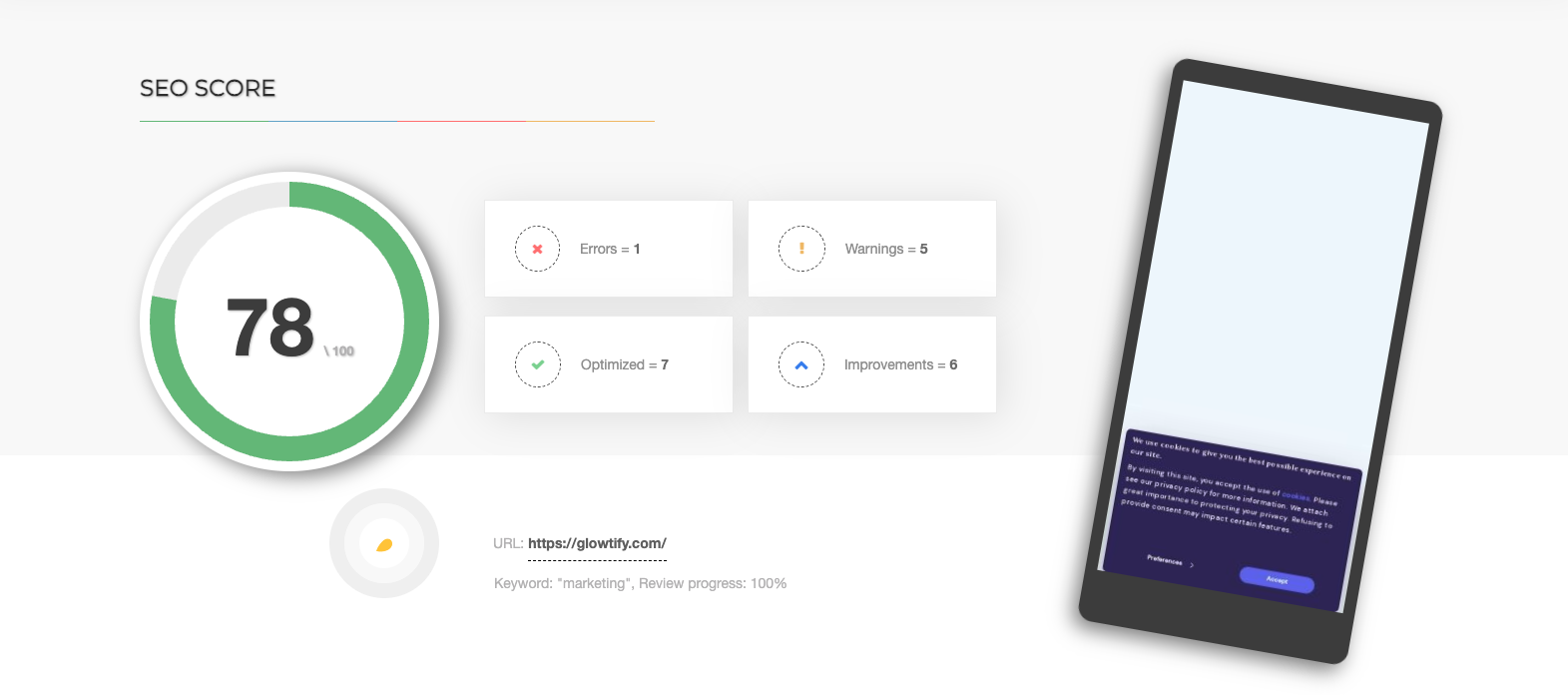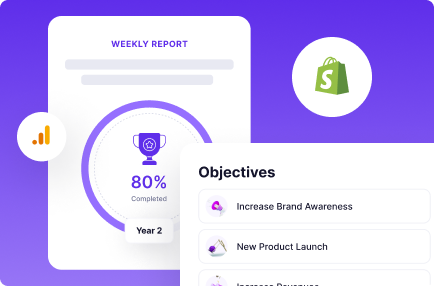Table of Contents
Whether you are a small business or a large enterprise, your success depends on a solid digital marketing plan to strategy.
A digital marketing plan will help you allocate resources and measure progress so that you can make informed decisions about where to focus your efforts. Kind of like a GPS, but for your marketing.
Moreover, a digital marketing plan will hold you accountable and keep you on track. But where do you start? How do you create a digital marketing plan that will help you achieve your business goals?
his blog post will walk you through 12 steps to help create your digital marketing plan. With a clear strategy in place, you can ensure that your business is well-prepared to take on the challenges and opportunities of the digital world.
What Is a Digital Marketing Plan?
A digital marketing plan is a document that outlines your marketing strategy and tactics for the upcoming year. It should include goals, objectives, strategies, tactics, and timelines for each domain you plan to focus on.
Why Do You Need 12 Months Digital Marketing Plan?:
It is not that easy to get your business up and running. You need to have a clear plan and strategy in place to make sure that you are on track and headed in the right direction. Having a 12-month digital marketing plan will help you stay focused and achieve your goals. Here’s why you need one:
- Helps you stay focused and on track
- Keeps you accountable
- Allows you to measure your progress
- Helps you budget your time and resources
- Gives you a roadmap to success
12 Steps To Create 12 Months Digital Marketing Plan
1. Niche Assessment
The first step in creating your digital marketing plan is to assess your niche. What are the demographics of your target market? What are their interests? What are their needs? You need to understand your target audience and do market research to create effective campaigns.
It involves evaluating your industry, products and services, target market, and competition. Also, check for monthly searches, product pricing (if present), search Google trends, and profitability analysis. By doing this, you can determine which marketing strategies will be most effective for your business.
2. Define Your Goals And Business Objectives
Once you know your target market, you must define your goals and objectives. What do you want to achieve with your campaigns? What are your targets? Be specific when describing your goals, mission statement, and objectives, and make sure they are SMART (specific, measurable, attainable, relevant, and time-bound).
It will help you measure the success of your inbound marketing campaigns and marketing funnel and ensure that you are constantly moving closer to your business goals. Be sure to make short-term and long-term goals, and break them down into achievable steps.
3. Competitive Analysis
Before you begin creating your marketing initiatives, it’s important to know who your competitors are and what they are doing. What are their strengths and weaknesses? What kind of marketing campaigns are they using? Do they have any social media presence?
It will help you identify areas to differentiate your business and attract more customers. Conduct a SWOT analysis of your competition and look at pricing, target market, marketing strategies, and products/services.
4. Create Your Digital Marketing Strategy
Once you understand your niche and competition well, it’s time to create your digital marketing strategy. This should include your marketing goals, objectives, target market, and strategies.
Also, include the marketing channels you’ll use to reach your potential customers, the content you produce, and the promotions you run. Create a buyer persona to keep track of the interests of your ideal customer base.
Be sure to allocate a budget for each marketing activity and track your results to see the return on investment (ROI).
5. Create Your Website
Your website is the foundation of your online presence and should be designed to attract and convert traffic into customers.
It’s important to use a professional web design company and ensure your website is optimized for search engines. Also, include strong calls to action for marketing success and make it easy for visitors to find what they want.
6. Set Up Your Social Media Accounts
Social media is a powerful tool for building customer relationships and promoting your brand. You need to set up accounts on the major social media channels and create engaging content that will attract attention. Also, use a social media marketing strategy to reach more people and drive traffic to your website.
7. Establish Your Brand Identity
A strong brand identity is a key to building customer trust and differentiating your business from the competition. You need to create a brand logo, colors, and style guide that will be used across all your marketing materials. Also, make sure all of your branding is consistent and professional.
8. Produce Quality Content After Keyword Research
Quality content is essential for attracting attention online and generating leads. You must produce various content types, including blog posts, articles, infographics, videos, and social media posts, while designing a content marketing strategy.
Be sure to target your audience with relevant content and use keywords and phrases to improve your SEO. For keywords, be sure to maintain naturality. In the past traditional marketing plan
Marketers would choose a few keywords and use them repeatedly in their content to rank high in search engines. However, today’s search engines are much savvier and can spot “keyword stuffing” easily.
So, your content needs to be attractive, informative, and relevant to your audience. That’s where keyword research comes in. By taking the time to understand what terms and phrases your target market is searching for, you can create content that will resonate with them and help you achieve your marketing goals.
9. Optimize Your Website for SEO
SEO is essential for attracting traffic to your website. You need to optimize your website for search engines using an SEO strategy. You can plan your backlinks and create an effective content strategy for new and existing customers to create a unique selling proposition.
Also, make sure your website is fast and easy to use. Take care of all on-page, off-page, and technical search engine optimization factors, and you’ll be good to go.
10. Use Paid Advertising
Paid advertising is a great way to reach more people and generate leads quickly. You can use Google AdWords, Facebook Ads, and other platforms to target your audience with relevant ads. Also, track your results to know what’s working and not.
11. Use Email Marketing
Email marketing is a great way to keep in touch with customers and generate leads. You need to collect email addresses from your website visitors and send them regular emails containing exciting content. Just be sure to include strong calls to action so people will take action.
12. Measure Your Results
It’s important to track the results of your marketing campaigns so you can see how well they are performing. Use tools like Google Analytics to measure website traffic, conversion rates, and sales. This will help you identify which strategies generate the best results and focus your efforts on those activities.
Also, measure your results and adjust your plan as needed. This will help you fine-tune your strategies and achieve better results.
FAQs on 12 Months Digital Marketing Plan
What is included in a digital marketing plan?
A digital marketing plan includes all the tactics you’ll use to promote your business online. This includes developing a website, creating social media profiles, producing quality content, and using paid advertising. You’ll also need to track your results so you can see which strategies are working and adjust your plan accordingly.
How often should I update my digital marketing plan?
There is no one answer to this question as it will vary depending on your business and marketing goals. However, it’s a good idea to update your plan at least quarterly so you can measure the results of your campaigns and make necessary changes. You may also want to update your plan more often if you are launching new campaigns or experiencing success with certain strategies.
Do I need a separate digital marketing plan for each branch of my business?
No, you don’t need a separate digital marketing plan for each branch of your business. You can create a single plan that covers all branches and use it to promote your business online. However, you’ll need to customize the plan for each branch so it targets the right audience and uses the right tactics.
Conclusion
So there you have it! Our 12 steps for creating your digital marketing plan. By following these simple steps, you now have a 12-month digital marketing plan template to help your business grow and succeed online.
Remember, don’t try to do everything at once. Start with a few goals, and then add more as you go along. And most importantly, be sure to track your progress so that you can adjust your plan as needed. Are you ready to get started? Let us know in the comments below.

Want more SEO traffic?
Discovering the secret to increasing your website’s traffic could be as simple as accessing this Free SEO analyzer tool!
Try it - it's free

